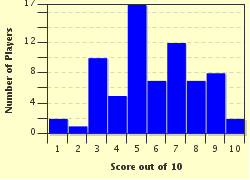Quiz Answer Key and Fun Facts
1. Which of the following best describes the location of the ancient kingdom of Lower Egypt?
2. In antiquity, Lower Egypt was known as "Ta-Mehu" after an important plant that grew in abundance there. Which of the following plants is also called "Nile grass"?
3. Which city, that became the first capital of Egypt, was the most important nome of Lower Egypt?
4. Which goddess, typically portrayed as a cobra, was both the patron and protector of Lower Egypt?
5. On the verso side of the Narmer Palette, Menes is shown wearing the "Deshret", which was the formal name for the crown of Lower Egypt. What is the common name for the crown?
6. What did the ancient Egyptians call the land that formed the southern boundary of Upper Egypt?
7. In order to reach the southern point of ancient Egypt, several areas of rapids and rocks in the Nile River had to be overcome. What was an area of these rapids called?
8. What symbol was sometimes found on the Hedjet, the crown of Upper Egypt? It was the symbol of the patroness of the kingdom.
9. Which ancient city, the second capital of ancient Egypt, was the administrative center of Upper Egypt?
10. What did the ancient Egyptians call the Kingdoms of Upper and Lower Egypt after unification?
Source: Author
ponycargirl
This quiz was reviewed by FunTrivia editor
bloomsby before going online.
Any errors found in FunTrivia content are routinely corrected through our feedback system.

